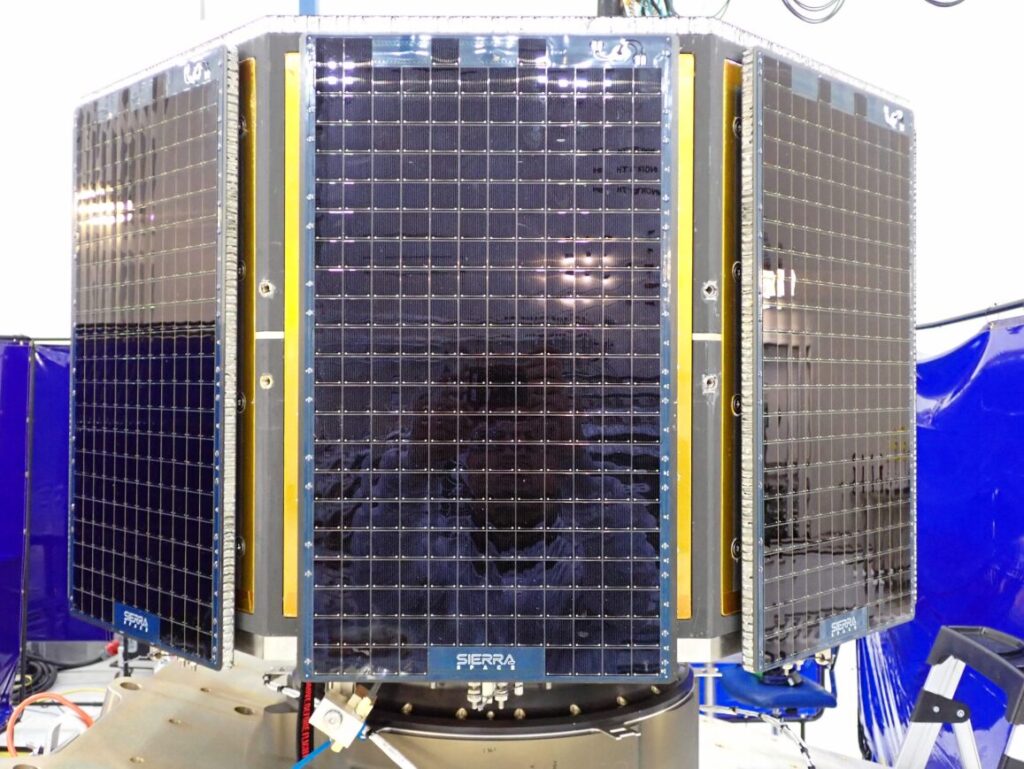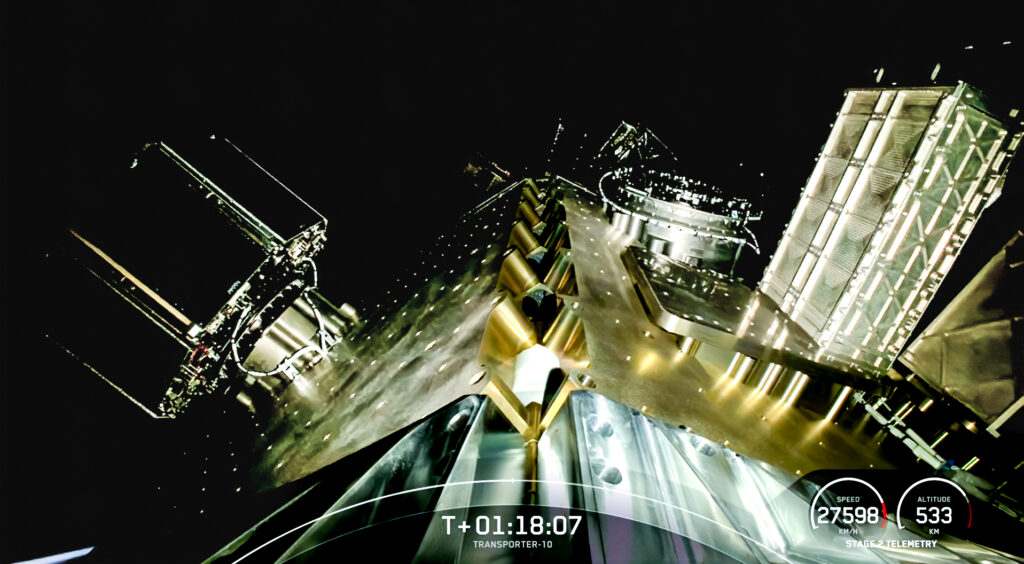You have to have a special kind of temperament to work in the space industry. It’s not just that you can’t be afraid to fail, for instance. You essentially have to be eager to fail, to know that you have to fail repeatedly if you’re ever going to succeed.
From the inverse perspective, you also have to know exactly how to react once a mission has gone right. That’s the position now for the team at Sidus Space, a company based in Cape Canaveral, Florida. Sidus recently saw its first satellite, LizzieSat-1, reach orbit, after launching aboard the SpaceX Transporter-10, from Vandenberg Space Force Base in California.
A few weeks after that, Sidus announced it had established two-way communications with LizzieSat-1 — a satellite largely produced via the Markforged additive manufacturing (AM) ecosystem — fully validating the launch as a success.
LizzieSat 1 Ready For Launch. Image courtesy of SpaceX
Everything changes for a space company after its first real-world win. Confirming that what you’ve been working towards is indeed possible is only half the battle. The company removes many uncertainties that have been there for years, and everyone involved can finally start to truly think about what comes next.
At the same time, of course, Sidus had already been thinking about what comes next, and there wasn’t much time for the LizzieSat team to congratulate themselves before they were back to work, planning for LizzieSat-2, 3, and 4. LizzieSat’s program manager, Lindsey Waitt, and its senior production engineer, Tony Boschi, spoke with me about the mood inside Sidus Space following the company’s reaching its big milestone:
“Prior to the launch, we were still in a situation where we had to think about, is everything going to work? Our first rapid prototype satellite was just an idea out there that a lot of people said wasn’t going to work,” said Boschi. “SpaceX asked us to test it five times with different tests all the way through. We had to change things throughout the production process — learning as we went. And it all amounted to a better satellite, and I think the whole industry is going to reap the benefits of what we’ve done so far.
“When it launched, I actually slept a full night for the first time since we started working on it. It had finally gone up, and we saw the video of it being deployed, and it looked exactly how it did at Vandenberg when we put it on the plate that got attached to the Transporter-10. LizzieSat 2, 3, and 4 are all coming faster than you can think, but at least for that moment, there was a huge sigh of relief at the company, because everyone realized that what we’re doing is truly feasible.”
For Waitt, the moment wasn’t just a relief, but a genuine catharsis:
“It was very emotional,” she said. “This is one of the best teams I’ve ever worked with, and we all put our soul into LizzieSat-1. Everyone at Sidus has the same passion and motivation, and we all worked endless hours. It was a sacrifice — our lives are in that satellite. So when we finally saw the launch, and saw our work get deployed, I cried.”
LizzieSat-1 (left), ready to deploy. Image courtesy of SpaceX
Boschi emphasized that the task would’ve been impossible without AM:
“Something like 80 percent of the satellite is printed,” the engineer noted, “so making it without AM just wouldn’t have been an option. One of the biggest benefits that everyone sees most immediately is the rail design. The shape of the vertical rail on our satellite is almost impossible to machine. But in general, every single time we tested it, we learned something about how it operates that enabled us to improve it the next time.
“Our machine shop is top-notch, it’s the best one I’ve ever worked with. The cost of making design changes, though, is so much cheaper with AM, and the process is so much faster. So anything I could do myself by printing it, I did. And we’re using it in a bunch of different ways: I made some of the fixtures that allowed us to make parts for the satellite, as well. We’re making the tooling that enables us to manufacture parts, in addition to parts themselves.”
In addition to all of that, 3D printing is necessary in the long run because the LizzieSat’s intended function requires so much inherent customizability. As Waitt told me, the plan is for each satellite to serve as many customers at once:
“Companies want to test out their technology by getting it into space, and we do it on an accelerated timeline so they don’t have to wait. It could be just one, but usually there’s two or three. It’s like buying a seat on an airplane,” she told me. “So, one customer might want to have their camera onboard. Another company might want to put a star tracker on it that’s still in the development phase, and that helps them get to [Technology Readiness Level] 9, which helps them sell their product. There’s a lot of people looking to the space industry right now to test AI with autonomous onboard processing. The use-cases are very diverse.”
In that vein, these likely won’t ever be mass-produced, which makes AM a perfect fit for the output scale:
“Because of the different customers involved, there’s different types of payloads on each satellite, which means every one is unique,” said Waitt. “There are obviously common components for all of them — the overall structure won’t really change. But the mounting locations change, the payloads change, etc.”
“We basically learned that after the first launch,” said Boschi. “We can mass produce the parts, but not the satellites themselves.”
“And that didn’t hit home until we actually went to work on the second one,” Waitt added.
Thus, Sidus has embarked not just on the development of a new product, but on a whole new approach to developing products. That’s the crucial lesson that can be learned by observing the daily unfolding of the space industry: there are some things that can only be realized in real time. You can hope as hard as you’re able to that the outcome will be like you expected it to be. However, until the idea fully enters reality, you can’t know if you’ve won or lost, and you find out at the same time as everyone else. The most effective way to deal with that is to be willing to change your blueprint on the fly.
Featured image courtesy of Sidus Space
Subscribe to Our Email Newsletter
Stay up-to-date on all the latest news from the 3D printing industry and receive information and offers from third party vendors.
Print Services
Upload your 3D Models and get them printed quickly and efficiently.
You May Also Like
The Dental Additive Manufacturing Market Could Nearly Double by 2033, According to AM Research
According to an AM Research report from 2024, the medical device industry, specifically in dentistry, prosthetics, and audiology, is expected to see significant growth as these segments continue to benefit from...
Heating Up: 3D Systems’ Scott Green Discusses 3D Printing’s Potential in the Data Center Industry
The relentless rise of NVIDIA, the steadily increasing pledges of major private and public investments in national infrastructure projects around the world, and the general cultural obsession with AI have...
AM Research Webinar Explores Continuum’s Sustainable Metal Additive Manufacturing Powders
Metal additive manufacturing (AM) powder supplier Continuum Powders is working to develop solutions that empower industries to reduce waste and optimize their resources. An independent life cycle assessment (LCA) of...
3D Printed Footwear Startup Koobz Lands $7.2M in Seed Round
California-based Koobz is focused on reshoring the U.S. footwear supply chain with advanced manufacturing processes, including 3D printing. The startup just announced that it has added $6 million to its...


































